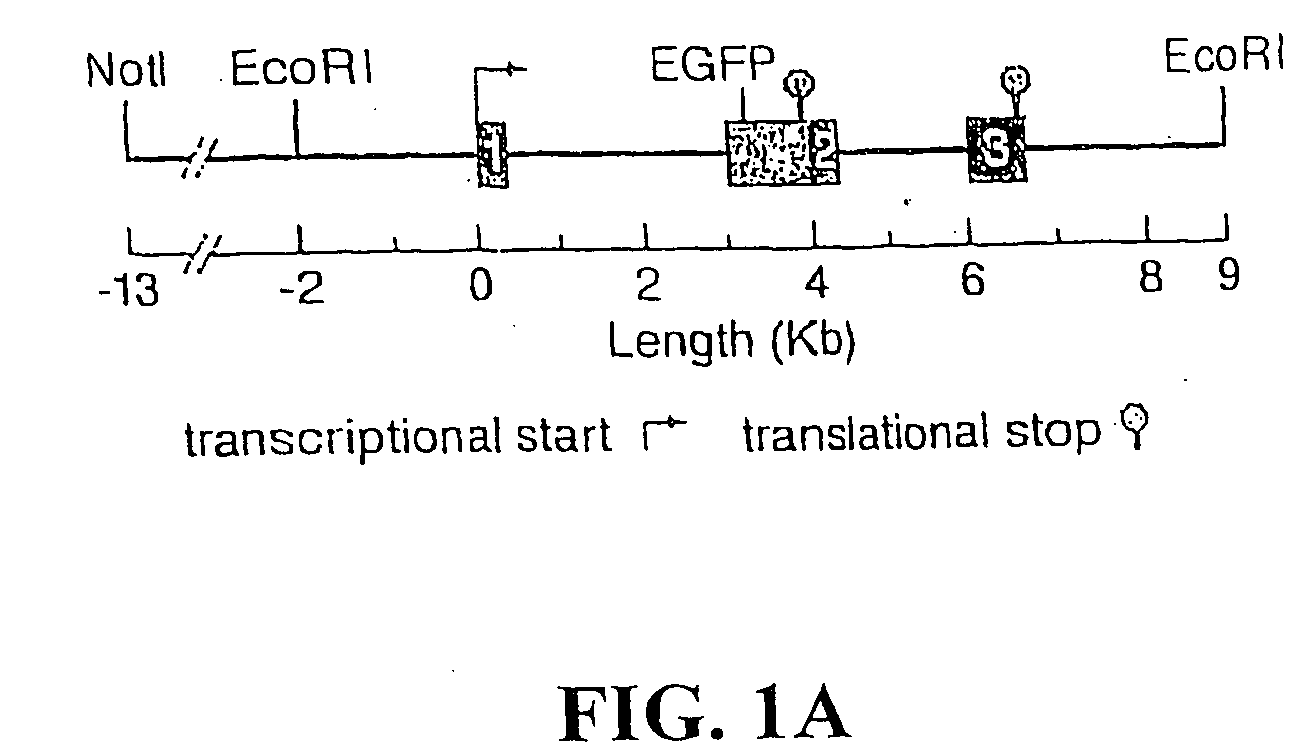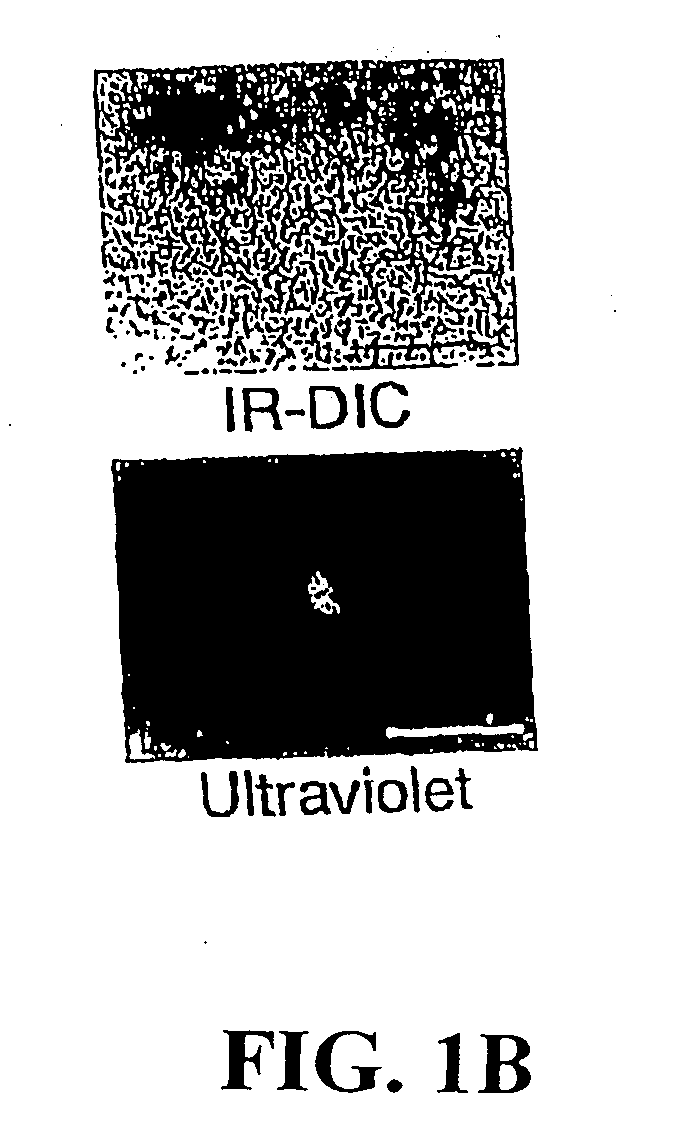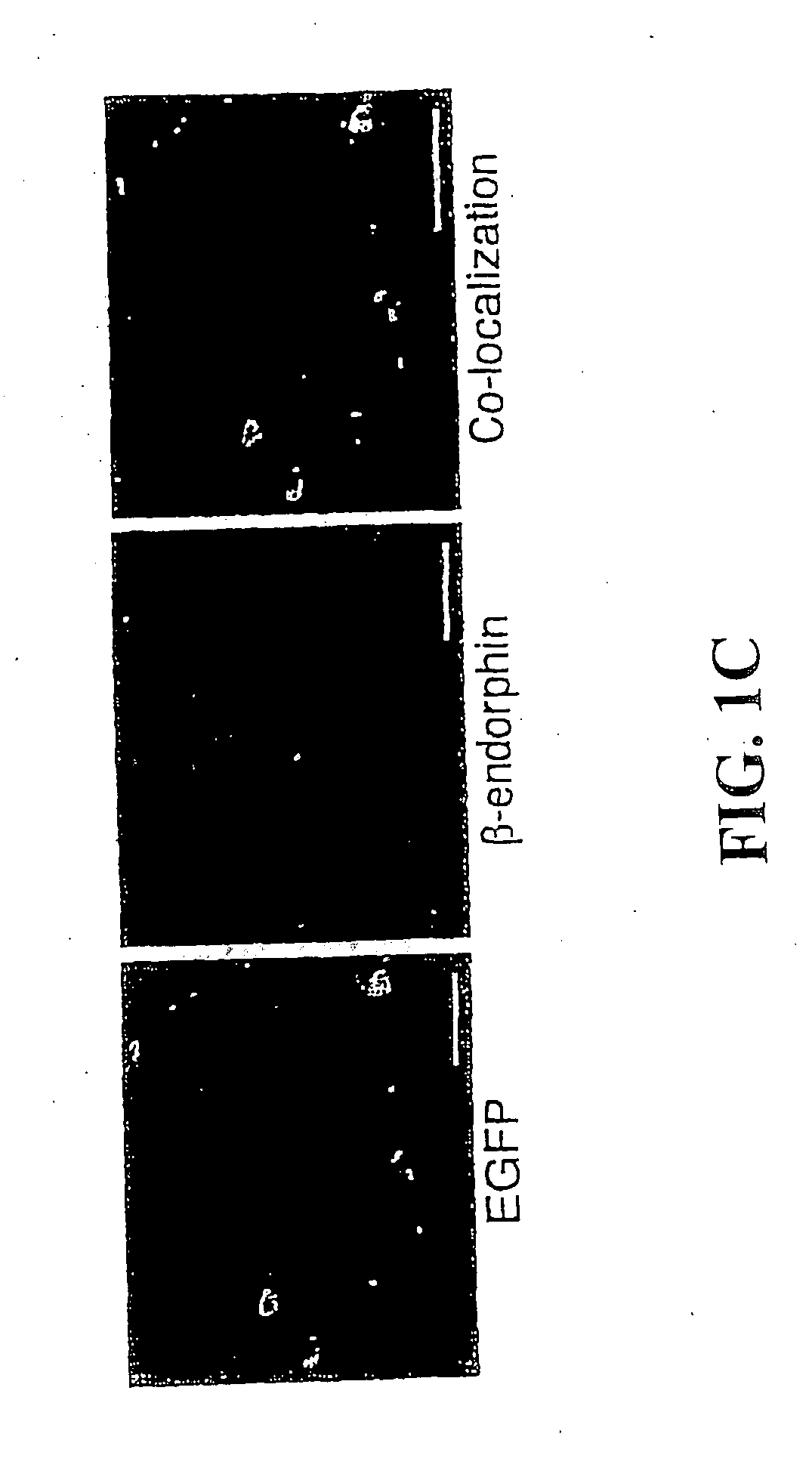Modification of feeding behavior
a feeding behavior and behavior technology, applied in the field of obesity, can solve the problems of alteration of energy metabolism, food intake, caloric intake, appetite, etc., and achieve the effects of decreasing appetite, decreasing calorie intake, and decreasing calorie intake of subjects
- Summary
- Abstract
- Description
- Claims
- Application Information
AI Technical Summary
Benefits of technology
Problems solved by technology
Method used
Image
Examples
example 1
Material and Methods
[0462]Generation of POMC-EGFP mice: The EGFP cassette contains its own Kozak consensus translation initiation site along with SV40 polyadenylation signals downstream of the EGFP coding sequences directing proper processing of the 3′ end of the EGFP mRNA. The EGFP cassette was introduced by standard techniques into the 5′ untranslated region of exon 2 of a mouse Pomc genomic clone containing 13 kb of 5′ and 2 kb of 3′ flanking sequences (Young et al., J Neurosci 1, 6631-40, 1998). The transgene was microinjected into pronuclei of one-cell stage embryos of C57BL / 6J mice (Jackson Laboratories) as described (Young et al., J. Neurosci 18, 6631-40, 1998). One founder was generated and bred to wildtype C57BL / 6J to produce N1 hemizygous mice. In addition, N2 and subsequent generations of mice homozygous for the transgene were also generated. The mice are fertile and have normal growth and development.
[0463]Immunofluorescence and GFP co-localization: Anesthetized mice wer...
example 2
Neural Network in the Arcuate Nucleus
[0478]A strain of transgenic mice was generated expressing green fluorescent protein (EGFP Clontech), under the transcriptional control of mouse Pomc genomic sequences that include a region located between −13 kb and −2 kb required for accurate neuronal expression (Young et al., J. Neurosci 18, 6631-40, 1998) (FIG. 1a). Bright green fluorescence (509 nm) was seen in the two CNS regions where POMC is produced: the ARC and the nucleus of the solitary tract. Under ultraviolet (450-480 nm) excitation POMC neurons were clearly distinguished from adjacent, non-fluorescent neurons (FIG. 1b) visualized under infrared optics. Double immunofluorescence revealed >99% cellular co-localization of EGFP and POMC peptides within the ARC (FIG. 1c). There was close apposition of both tyrosine hydroxylase (TH)- and NPY-stained terminals on EGFP-expressing POMC neurons, but no evidence of co-localization of the TH or NPY immunoreactivity with EGFP. Total fluorescent...
example 3
Administration of PYY Inhibits Food Intake
[0485]The orexigenic NPY and the anorectic alpha melanocortin stimulating hormone (α-MSH) systems of the hypothalamic arcuate nucleus are involved in the central regulation of appetite (Schwartz et al., Nature 404, 661-671, 2000). However the potential mechanisms signaling meal ingestion directly to these hypothalamic-feeding circuits are unclear. PYY3-36 is a gut-derived hormone that is released postprandially in proportion to the calories ingested (Pedersen-Bjergaard et al., Scand. J. Clin. Lab. Invest. 56, 497-503, 1996). The effects of peripheral administration of PYY3-36 on feeding were investigated.
[0486]An intraperitoneal injection (IP) of PYY3-36 to freely feeding rats, prior to the onset of the dark-phase, significantly decreased subsequent food intake (FIG. 5a). A similar inhibition of feeding was seen following IP injection in rats fasted for 24 hours (FIG. 5b). A time course of the plasma PYY3-36 levels achieved following IP inje...
PUM
| Property | Measurement | Unit |
|---|---|---|
| temperature | aaaaa | aaaaa |
| temperature | aaaaa | aaaaa |
| pressure | aaaaa | aaaaa |
Abstract
Description
Claims
Application Information
 Login to View More
Login to View More - R&D
- Intellectual Property
- Life Sciences
- Materials
- Tech Scout
- Unparalleled Data Quality
- Higher Quality Content
- 60% Fewer Hallucinations
Browse by: Latest US Patents, China's latest patents, Technical Efficacy Thesaurus, Application Domain, Technology Topic, Popular Technical Reports.
© 2025 PatSnap. All rights reserved.Legal|Privacy policy|Modern Slavery Act Transparency Statement|Sitemap|About US| Contact US: help@patsnap.com



